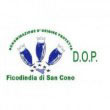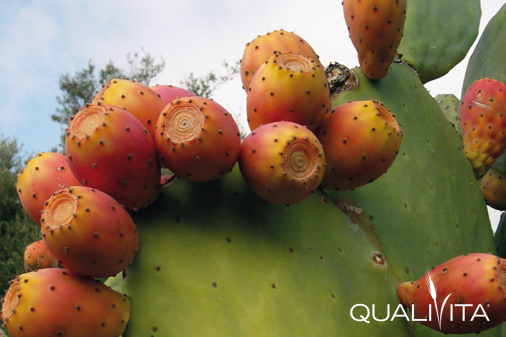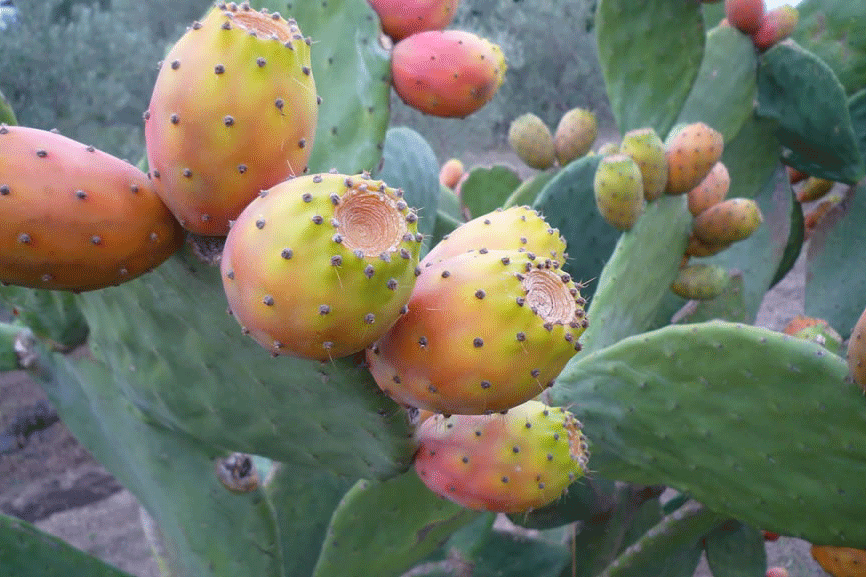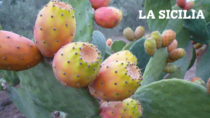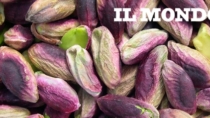Description
The Ficodindia di San Cono PDO refers to the fresh despined prickly pear belonging to the species Opunzia ficus indica, deriving from the following cultivars: Surfarina or Nostrale (also known as Yellow); Sanguigna (also known as Red), Muscaredda or Sciannarina (also known as White). A minimum percentage (5%) of other local ecotypes is permitted. Trunzara selections related to the Surfarina, Sanguigna and Muscaredda cultivars are also permitted in the PDO, as they are considered to be local ecotypes.
Production Area
The production area of Ficodindia di San Cono PDO is within territory at an altitude of between 200 and 600 metres a.s.l., situated in the municipalities of San Cono and San Michele di Ganzaria in the Province of Catania, Piazza Armerina in the Province of Enna and Mazzarino in the Province of Caltanissetta, in the Sicily region.
Production Method
The soil must be prepared and fertilised before planting. The plantations are specialised, with a density of 200 to 650 plants per hectare. The spring flowers and fruit are generally removed between May 10th and the end of June, with a procedure known as scozzolature. This induces a second blooming and a later fruiting. The harvest must take place between August 20th and September 30th for the first flowering fruit, known as Agostani, and from September 10th to December 31st for late-ripening or Scozzolati fruit. The prickly pears must be despined before the fruit can be made available for consumption.
Appearance and Flavour
Ficodindia di San Cono PDO is a large-sized fruit, with a weight varying from 105 to 270 g (with 5% tolerance). The skin is an intense colour, with green to yellowish-orange hues for the Surfarina cultivar; the Sanguigna cultivar ranges from green to ruby-red and the Muscaredda cultivar is green to straw-white. The fragrance is delicate and it has an extremely sweet flavour.
History
The presence of the prickly pear in Sicily is secular. It was already being cultivated in the mid-19th century and was considered to be one of the most important crops on the island, so much so that in 1840 French agronomist De Gasparin described it as “the manna, providence of Sicily”. The prickly pear has been a specialised crop in the San Cono area since the 1970s.
Gastronomy
If kept at a low temperature, Ficodindia di San Cono PDO can be kept for several weeks. As well being a tasty fresh fruit, it is also used as an ingredient in numerous recipes: it can be roasted or boiled and used in salads; stuffed with Provola cheese and onion and then fried and seasoned with tomato sauce; used as a condiment for spaghetti, rice or meat and fish-based dishes. It can also be reduced to make jam and mustard.
Marketing
The product is marketed as Ficodindia di San Cono PDO, in the following varieties: Surfarina or Nostrale (also known as Yellow), Sanguigna (also known as Red), Muscaredda or Sciannarina (also known as White). The Agostani typology are available in August and September, while the Late-ripening or Scozzolati typologies can be found from September to December. They are sold in wooden, plastic or cardboard boxes, all of which can be perforated. According to tradition, the three different cultivars can be present in the same packaging. The weights vary from 500 g to 5 kg. The consented commercial categories are Extra and First.
Distinctive Features
The presence of broad valleys with good ventilation and sunlight, as well as a mild climate throughout the year, are responsible for the high content of anthocyanin, which determines the colour of the skin and pulp of Ficodindia di San Cono PDO. The moderate altitude and excellent management of the water resources contribute to the development of larger fruit, with higher sugar content than other prickly pears.



